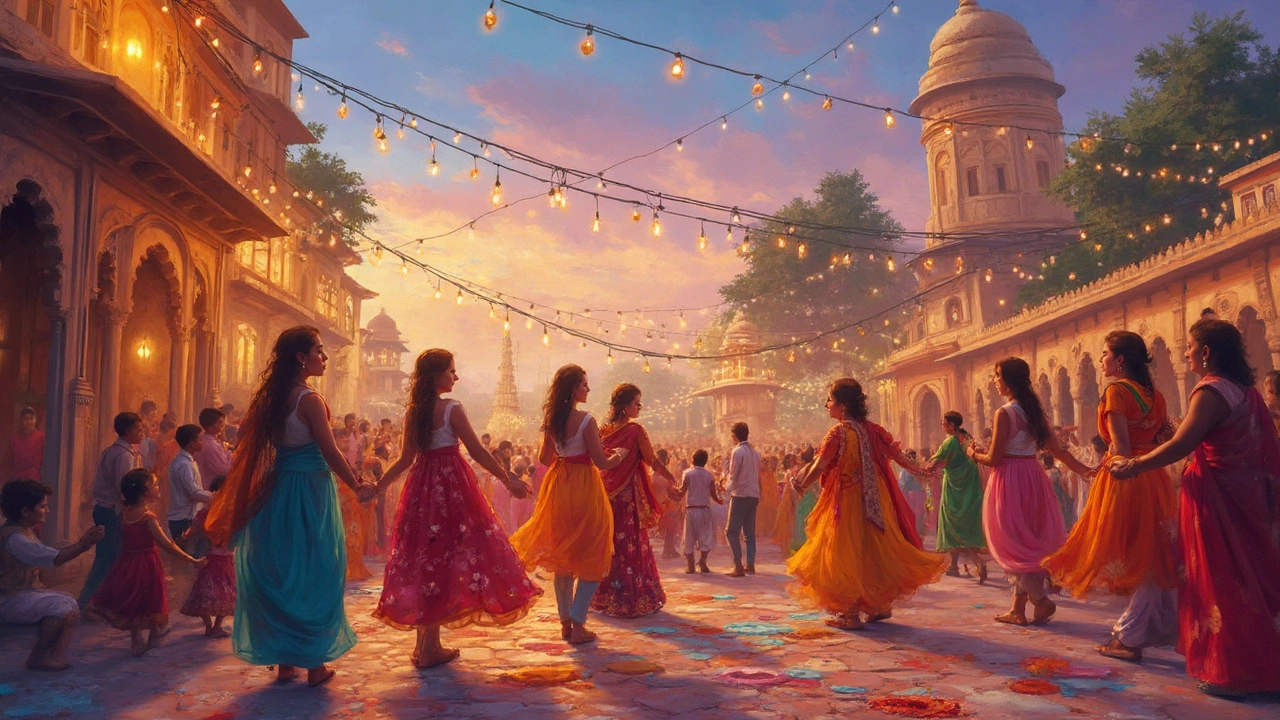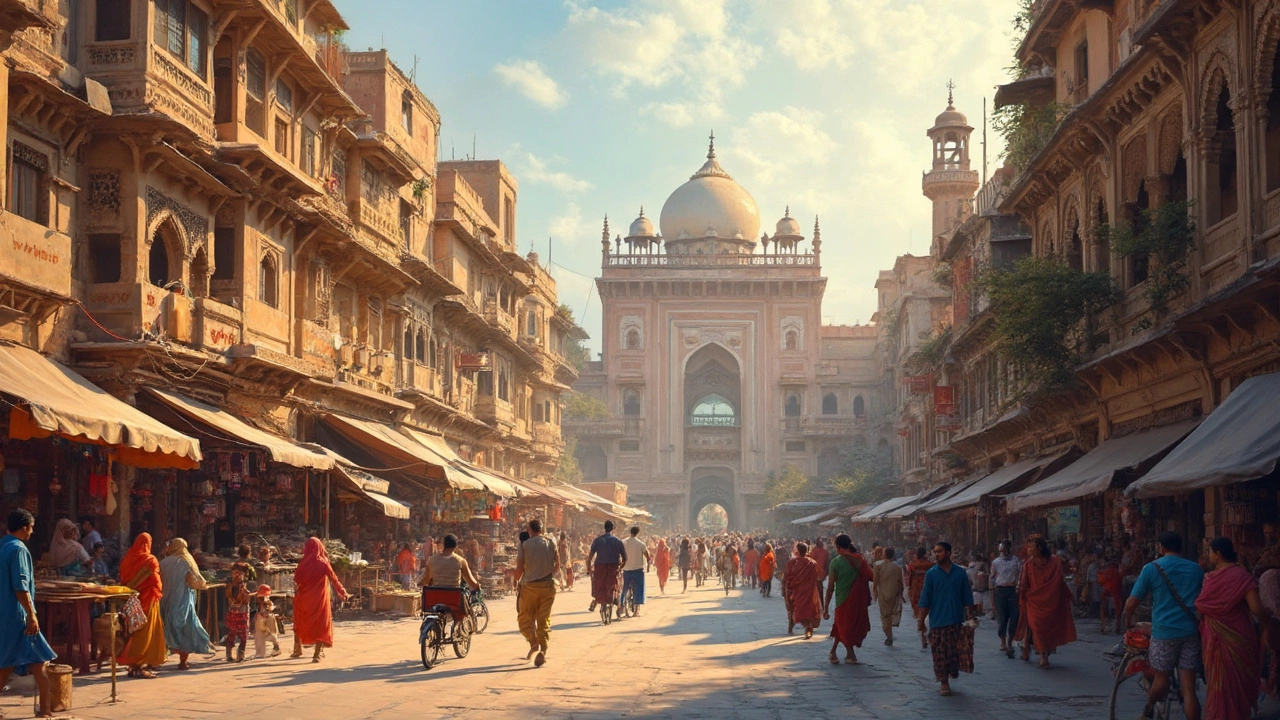When people talk about India's heritage, they usually imagine grand forts, palaces, and epic tales from ancient times. But did you know there's one city in India that's officially recognized as the country's first UNESCO World Heritage City? Yep, it's Ahmedabad. This isn't just about fancy titles—Ahmedabad stands out because it keeps its old soul alive in the middle of all the modern hustle.
Walk around the city and you'll bump into centuries-old mosques, vibrant pols (those tightly-packed neighborhoods with cute wooden houses), and stepwells that'll make you pause and wonder about life hundreds of years ago. It's not all about the monuments, though. The city oozes character through its street food stalls, daily markets, and festivals that turn entire neighborhoods into parties.
If you're curious about why everyone raves about Ahmedabad, stick around. Whether you're planning a trip or just want a slice of Indian heritage from your couch, you're in for something special. And if you love snapping pictures, this city will fill up your phone storage in no time.
- How Ahmedabad Became India's Heritage City
- Can’t-Miss Heritage Spots in Ahmedabad
- Local Experiences: Food, Festivals, and Markets
- Travel Tips for Exploring Ahmedabad’s Heritage
How Ahmedabad Became India's Heritage City
Ahmedabad proudly wears the title of ‘Heritage City of India’ for good reason. Back in July 2017, UNESCO stunned everyone by granting Ahmedabad the title of India’s first official World Heritage City. What made it stand out? It was the city’s combo of historic charm, living traditions, and a city layout that’s still going strong after six centuries.
Founded in 1411 by Sultan Ahmad Shah, Ahmedabad has a walled city at its heart that’s like a maze. The unique “pol” neighborhoods—clustered houses with secret passages—were designed for safety and close community living. You'll still spot pretty wooden balconies, intricate doors, and colorful bird feeders that tell stories of how people lived back then. The city’s blend of Hindu, Islamic, and Jain influences can be seen in the stunning architecture, from the Jama Masjid to centuries-old Jain temples and merchant havelis.
UNESCO also pointed out Ahmedabad’s ability to mix the old with the new. Even with all the noise, rickshaws, and new glass buildings, those classic pols and monuments haven’t lost their place. Local communities work hard to keep festivals, crafts, and food traditions alive, so nothing gets forgotten. The nomination process wasn’t a walk in the park either. Ahmedabad had to beat out big names like Delhi and Mumbai, showing off its urban heritage, centuries of multicultural living, and conservation efforts.
If you want to explore an Indian city where you can hang out in a 15th-century stepwell in the morning and grab street snacks in the afternoon, Ahmedabad’s where you want to be. It’s more than a title—it’s proof that a city can keep its soul intact even as it grows.
Can’t-Miss Heritage Spots in Ahmedabad
Walking through Ahmedabad is like hitting the jackpot for history fans. The city packs in real treasures where you can actually see, touch, and feel Indian history. Here’s a lowdown on the must-visit heritage sites you shouldn’t skip.
- Sabarmati Ashram: This isn’t just Gandhi’s old house—it’s where India’s freedom fight picked up pace. The ashram sits right by the Sabarmati River, and you can check out Gandhi’s spinning wheel, simple living space, and some weirdly calming silence all around.
- Jama Masjid: Built in 1424, this mosque is in the heart of the old city. It’s famous for its beautiful yellow sandstone pillars and wide courtyards. Locals still gather here for prayers, and tourists can wander quietly, taking in the details.
- Adalaj Stepwell: Head a bit out of the main city for this one, but it’s worth it. This five-story stepwell was built way back in 1499. It’s cool (literally, it stays chill even during the hottest months) and the designs carved into the stone are seriously detailed.
- Bhadra Fort: Used to be the seat of rulers and still feels a little royal today. The place is buzzing during festivals, and you can climb up to get a bird’s-eye view of old Ahmedabad.
- Sidi Saiyyed Mosque: People visit this mosque just to stare at its famous stone lattice window called the ‘Tree of Life’. Believe it or not, this design crops up everywhere, from state tourism logos to souvenirs.
Check out these spots if you want to really get why Ahmedabad got the heritage city of India title. Here’s a handy table to help you plan your stops and get some quick facts:
| Place | Year Built | Main Attraction | Entry Fee |
|---|---|---|---|
| Sabarmati Ashram | 1917 | Gandhi’s museum, riverside spot | Free |
| Jama Masjid | 1424 | Sandstone pillars, vast courtyard | Free |
| Adalaj Stepwell | 1499 | Intricate stone carvings | INR 25 (foreigners: INR 200) |
| Bhadra Fort | 1411 | Old palace, city view | Free |
| Sidi Saiyyed Mosque | 1573 | Famous stone window | Free |
None of these places feel fake or over-polished—they’re all still part of daily life here. It’s pretty easy to cover these on foot or with a quick rickshaw ride, so you won’t waste time stuck in traffic.

Local Experiences: Food, Festivals, and Markets
Ahmedabad isn’t just about ancient walls and heritage sites. The city has a way of making daily life something special, whether you’re grabbing snacky street food, joining a festival, or getting lost in a crowded market. Here’s why these local experiences are a big deal if you want to feel the real pulse of the heritage city of India.
Food: Let’s start with what your stomach will remember. Sure, you’ll find tasty dal and fluffy rotis everywhere, but Ahmedabad’s street food is on another level. Don’t miss khaman (soft, spongy cake made from chickpea flour), fafda-jalebi (a classic sweet-and-savory breakfast), and sev usal (spicy chickpea curry with crunchy toppings). Manek Chowk is the foodie hotspot at night—what’s cool is it turns from a jewelry market by day to a buzzing food street when the sun sets.
- Khaman Dhokla: Light, tangy, and eaten at all hours.
- Fafda-Jalebi: Sweet-and-salty combo, especially popular on Sundays.
- Dal Vada: Spicy fritters that hit the spot during the monsoon.
Festivals: Ahmedabad parties hard, especially during big festivals. The International Kite Festival (held mid-January during Uttarayan) is wild—the sky turns into a dance of flying colors, and people from more than 40 countries join in. Navratri, the nine-night dance festival, takes over with huge crowds showing off their garba moves. If you want a taste of Indian culture on full blast, these are the days to be in Ahmedabad.
| Festival | When | What Makes It Special |
|---|---|---|
| International Kite Festival | January | Thousands of kites, international participants, rooftop parties |
| Navratri | September-October | Huge garba dances, traditional music, colorful dress everywhere |
| Diwali | October-November | Markets glow with lights, sweets, and bustling shoppers |
Markets: If you want to shop or just wander, Ahmedabad’s old markets don’t disappoint. Law Garden Night Market is famous for bargain jewelry, traditional chaniya cholis, and embroidered handicrafts. Rani no Hajiro and Teen Darwaza are the go-tos for local flavors, clothes, and antiques. Prices are negotiable, so bring your haggling game.
- Law Garden: Great for traditional wear and handcrafted junk jewelry.
- Manek Chowk: Best for snacking late and people-watching.
- Rani no Hajiro: Vintage vibes, ethnic clothes, and some killer street eats.
A quick tip: The busiest time in these markets is after 6 PM, so evening strolls work best. Honestly, hanging out in these spots is the quickest way to see why Ahmedabad owns its heritage title—not just for monuments, but for making every day a piece of living history.
Travel Tips for Exploring Ahmedabad’s Heritage
First things first—don’t try to see Ahmedabad all in one day. The best way to enjoy the heritage city of India is to slow down and soak up the vibe. The city’s historic spots are scattered, so plan your days to cover a couple of areas at a time.
If you want real insight, start your morning with the city’s famous heritage walk, organized by the Ahmedabad Municipal Corporation. Guides lead you through ancient pols, sharing cool stories and pointing out unique carvings and hidden temples. These walks usually begin near Swaminarayan Temple in Kalupur and last about two hours.
Getting around is pretty easy. Use auto-rickshaws for short trips—just make sure to agree on the fare beforehand. If you’re in a group or with family, booking a cab through apps like Ola or Uber saves time. For a local feel, try the Ahmedabad BRTS bus system; it’s reliable and covers key heritage spots.
- Old Ahmedabad gets crowded, especially during festivals and weekends. Early morning is best if you want empty streets for photos and peaceful site visits.
- Remember to dress in light, comfy clothes and carry a bottle of water. Summers (April to June) are boiling hot, so the winter months (November to February) are hands down the best for walking tours.
- Sometimes, smaller stepwells or mosques have specific entry times or might not be open to tourists on certain days—double-check before you head out.
Don’t forget about food. Street food is safe and tasty at popular spots—manek chowk is famous after sunset for its local snacks, but go easy if you’re not used to spicy stuff.
If you’re a museum buff, take time for Sidi Saiyyed Mosque, the Calico Museum of Textiles, and Sabarmati Ashram. Tickets and timings vary, so it helps to check ahead. Many sites are closed on Mondays.
| Sight | Best Time to Visit | Entry Tips |
|---|---|---|
| Heritage Walk (Pols) | 7 AM - 9 AM | Book in advance, wear comfy shoes |
| Sabarmati Ashram | 8:30 AM - 6:30 PM | Closed on major public holidays |
| Manek Chowk | After 8 PM | Try local snacks, go with a group |
| Calico Museum | 10:30 AM - 1:00 PM | Prebook tours only |
Always carry some cash, but digital payments work in most places now. Stay alert for festival dates—like Uttarayan or Navratri—when the city gets extra colorful (and crowded). And honestly, talking to locals is a shortcut to finding those secret gems you won’t spot on Google Maps. People here are friendly and love sharing stories about their city.
